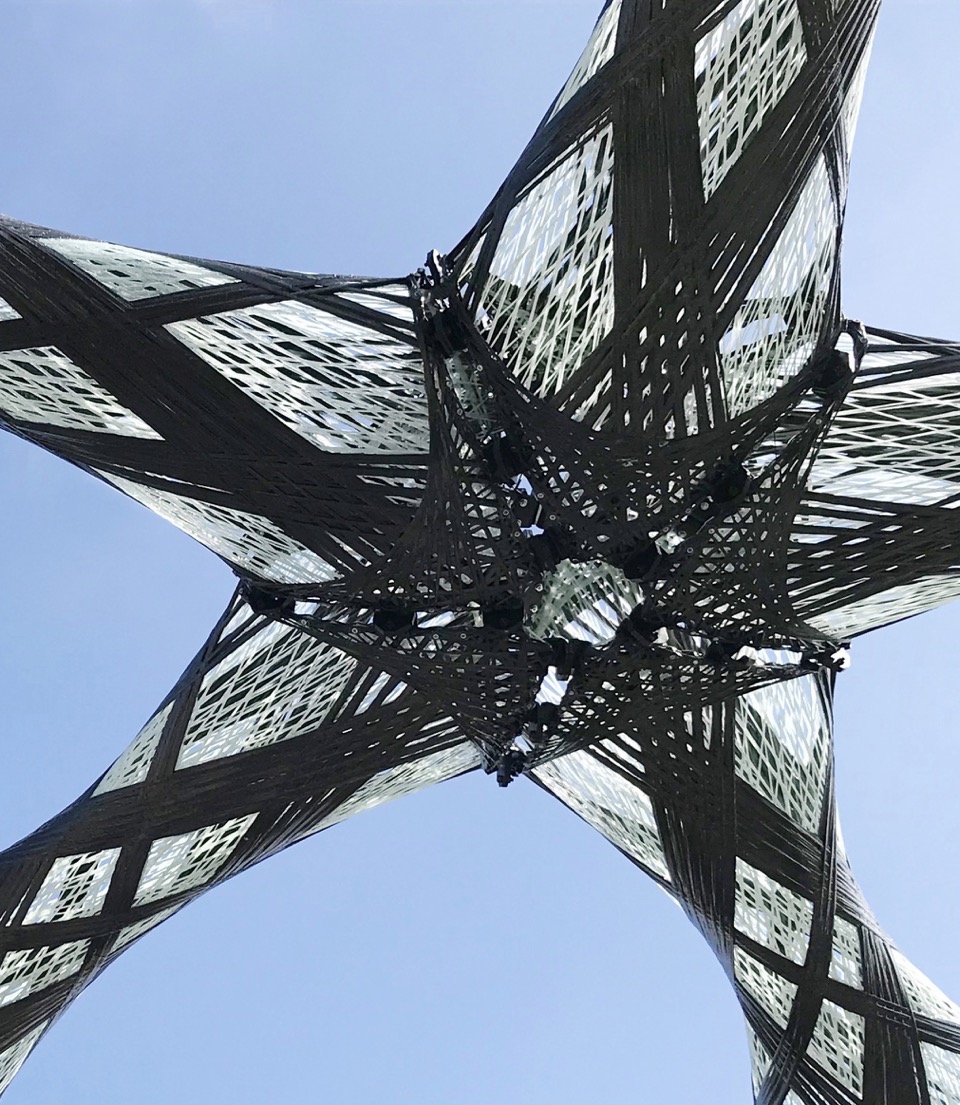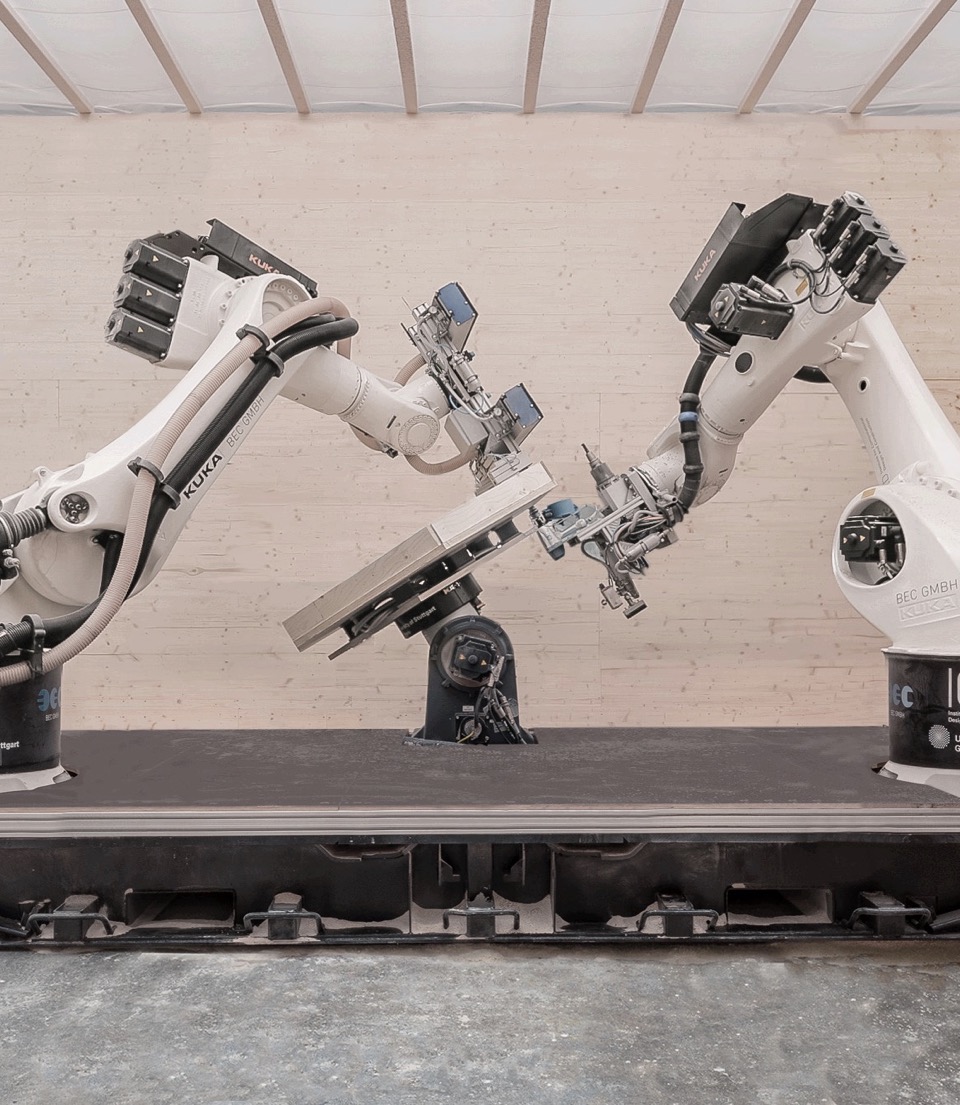Two highly innovative and biologically inspired pavilions have been created by The Institute for Computational Design and Construction (ICD) and the Institute for Building Structures and Structural Design (ITKE) at the University of Stuttgart for the 2019 Bundesgartenschau, a horticultural and sustainable urban design event held in the German city of Heilbronn over the summer months. Each of these lightweight BUGA pavilions not only mirror structures found in nature, but also showcase the impact of digital technologies on future construction and architecture, whilst using two very different materials: wood and fibre composites for their construction.


For the BUGA Fibre Pavilion, the inspiration was how in biology most load-bearing structures are fibre composites. For example fibres such as cellulose, chitin or collagen combine with a matrix material that supports them and maintains their relative position. These structures deliver high performance and efficiency, with resources only being positioned when and where required, which stems from their fibrous properties.
The BUGA Fibre Pavilion wanted to transfer this biological principle of load-adaption, and its highly differentiated fibre composite systems, into architecture using manmade composites similar to those found naturally. To create the pavilion 150,000 metres of these glass- or carbon-reinforced plastic fibres were individually designed and placed, before being wound into position between two scaffolds by robots.

For the BUGA Wood Pavilion, the design was based on the plate skeleton of the sea urchin that had been studied in-depth by the University. The idea for the structure was to create a wide, reusable expanse drawn from the biomimetic principle of using ‘less materials’ through having ‘more form’.
The building was constructed like a large intricate 3D jigsaw puzzle, using a specially-developed robotic manufacturing platform for the automated assembly and milling of the pavilion’s 376 bespoke hollow wood segments to sub-millimetre precision.


The highly technical and resourceful teams involved in the building of both pavilions are quick to highlight how these structures simply wouldn’t have been possible a few years ago. However it has been the use of the latest technology and biomimetic practice that has enabled these novel architectural buildings to be created, from the expressive and lightweight construction based on nature, the integrative co-design utilising engineering and fabrication development, through to the use of robotics and computational design. All of which have come together and have led this directional project.
